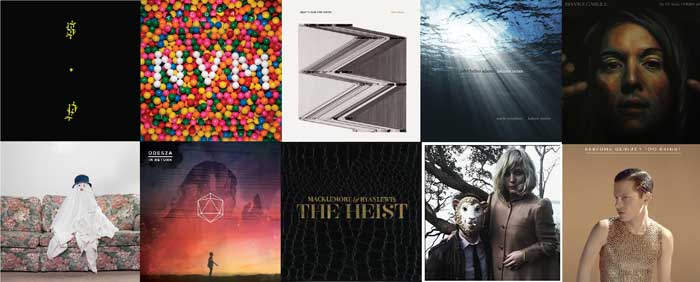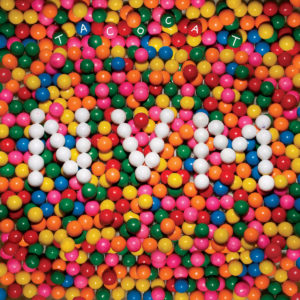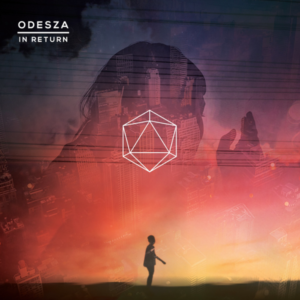The difference between an artistic endeavor’s cultural footprint and its quality are not mutually exclusive, but they often diverge to a noticeable degree. The soundtrack to The Bodyguard is one of the five best-selling albums of all-time, but good luck finding someone who champions it as their favorite album ever. So while it might not be beloved, it’d be even sillier to dismiss that soundtrack as an irrelevant cultural touchstone of 1992.
As the digital decade of the 2010s has further splintered pop culture into more niche subsets with only a few monoculture titans emerging from the pack (Marvel movies, Taylor Swift, etc.), it’s easier for us to frame our own tastes as the things that diverge from the herd. But any look back on the decade wouldn’t be full without looking at the big things that mattered to large swaths: the best sellers, the award-winners, the trendsetters.
This list is not an attempt to rank which are the best Seattle albums of the decade (that list can be found here), but rather focus on the albums that left the biggest footprint this decade via their combination of sheer newsworthiness, omnipresence, and/or impact on the cultural scene. Some very big albums from local acts haven’t made the cut due to an abundance of breakouts (hi, Car Seat Headrest), geographic issues (Anacortes is not Seattle, Mount Eerie fans), or relative inactivity (try playing Seattle shows more than once every 7 or so years, Pearl Jam). But overall, this feels like a pretty good snapshot of the music that mattered in our city over the 2010s.
 10. Time to Go Home – Chastity Belt (2015)
10. Time to Go Home – Chastity Belt (2015)
No Seattle band tapped into the decade’s detached modern malaise among young adults quite like Chastity Belt. Julia Shapiro’s vocal delivery and lyricism somehow can be caustic, sarcastic, melancholy all within the same breath. When paired with the band’s mid-tempo jams that are incredibly tight while feeling cavalier, the whole package hits the sweet spot of effortless longing with the faintest whiff of hope in the face of a world that seems like a rigged, burning down sham.
After honing the formula on 2013’s No Regrets (there’s a strong argument to be made that “Seattle Party” should be the city’s official song of the decade), Time to Go Home found the band firing on all cylinders. “Cool Slut” serves as a catchy lean-into-it feminist empowerment anthem, “Joke” radiates an intoxicating and hazy slow-burn nihilism, and “Time to Go Home” explores the dizzying blur of meaningless nights out as it artfully morphs into an epic album-ender. Chastity Belt is the perfect soundtrack for disenchanted urban twentysomethings, and Time to Go Home was the breakout album that alerted that demographic in metropolises outside of the Pacific Northwest.
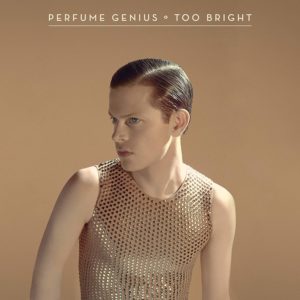 9. Too Bright – Perfume Genius (2014)
9. Too Bright – Perfume Genius (2014)
Before the arrival of Too Bright, conversation about Perfume Genius (aka Mike Hadreas) tended to be glowing, but in tiny terms. People lauded the singer-songwriter’s first records (Learning and Put Your Back N 2 It) by talking about their quietness, delicacy, intimacy, etc. Even Hadreas’s stage presence tended more towards the timid, something akin to early Elliott Smith. But Too Bright burst that constricting characterizations with a breakout record the swayed and sashayed with openly queer rock star zeal.
The tender piano ballads were still there, but Perfume Genius tapped into a well of overflowing bravado on tracks like “Queen” and “Fool.” No longer self-relegated to a wallflower disposition, Hadreas attacks songs on Too Bright with a ferocious confidence, and the album helped establish him as one of the most creative, norm-pushing minds in pop/rock music.
No musical corner of Seattle flourished during the 2010s as much as the women-fronted punk/indie scene. And while it had been percolating the first few years of the decade, NVM felt like the crest of the (crimson) wave, crashing with a tidal power which flooded the scene with TacocaT’s peers and progeny for years to come.
The album itself is a feminist pop punk tour de force with some of the catchiest tunes ever penned about street harassment (“Hey Girl”) and periods (“Crimson Wave”), as well as on-point odes to Seattle problems like the horrors of the Sound Transit’s #8 bus (F.U. #8) and our city’s inability to handle winter weather (“Snow Day”). TacocaT didn’t spawn the scene, but the success of NVM felt like TacocaT propping open the proverbial backdoor so that all their cool fem friends could sneak in and crash the party.
 7. Kintsugi – Death Cab for Cutie (2015)
7. Kintsugi – Death Cab for Cutie (2015)
With Pearl Jam transitioning to a beyond sparse local presence this decade, Death Cab for Cutie took over the mantle as Seattle’s biggest active rock band. But Kintsugi marked the end of an era, as it was with the band’s final release with original guitarist (and producer up until this record) Chris Walla.
Kintusgi also manages to be the best Death Cab release of the 2010s. It lyrically finds Ben Gibbard in the Hollywood Hills, sorting through the aftermath of his divorce with the reflective angst mixed with glimmers of hope that has long been his calling card. And while the album doesn’t rise to the heights of the best Death Cab releases, the opening salvo of “No Room in Frame,” “Black Sun,” and “The Ghosts of Beverly Drive” can hold its own against any of the band’s starting stretches.
To no one’s surprise, the band hasn’t sounded totally the same since Walla’s departure, but at least Kintsugi serves as an admirable send-off for all involved.
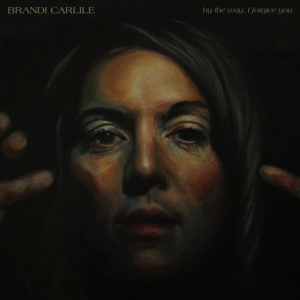 6. By the Way, I Forgive You – Brandi Carlile (2018)
6. By the Way, I Forgive You – Brandi Carlile (2018)
It kind of seems silly to talk about a beloved songwriting veteran like Brandi Carlile having her “breakout moment” after about 15 years of grinding and multiple albums that topped the folk charts, but By the Way, I Forgive You seemed like the moment that finally cemented for good her powerful voice on the national stage. The album – featuring the single “The Joke” – garnered Carlile Grammy nominations in the big three categories (Album of the Year, Song of the Year, Record of the Year), and while she didn’t win any of those, she took home golden gramophones in three other categories. It wasn’t the only hardware Carlile earned because of By the Way…, also winning the CMT Impact Award and Billboard Women in Music’s Trailblazer Award.
Can you quantify an album’s quality by the number of trophies it receives? Of course not. Was Carlile putting out albums just as good as By the Way… for years? Of course. That’s not the point. There are many brilliant artists in the Pacific Northwest that toil in relative obscurity their whole careers. So when an artist’s peers and the larger industry decide this is finally the moment to put them on the pedestal, it’s significant. Late is always better than never.
In a decade when EDM overtook rock in terms of youth popularity, any discussion about our city’s cultural climate would be incomplete without mentioning the rise of Seattle’s one major EDM act – Odesza.
After building a sizable SoundCloud following with chill vibes on its debut LP Summer’s Gone, the duo launched to headliner status with its second album In Return. In contrast to many of the biggest EDM stars of the era, Odesza approached In Return with an eye towards more traditional song structure; tapping singers to provide fresh vocals for more than half the tracks instead of leaning on samples or just instrumentals. While it might not seem like a novel approach to those outside of the electronic world, it helped Odesza stand out from its peers. Paired with the duo’s warm, breezy, and laid back soundscape, the vocalists (including Zyra, Briana Marella, Shy Girls, and Jenni Potts) provided that extra zip to make the whole package of In Return go down super smooth regardless of whether you were a Paradiso kid and EDM skeptic.
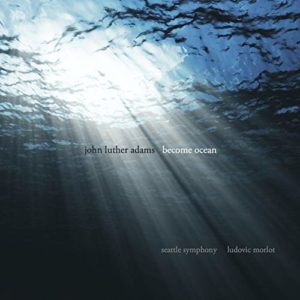 4. Become Ocean – Seattle Symphony (2014)
4. Become Ocean – Seattle Symphony (2014)
There are many cities that have wonderful orchestras. There are far fewer that have world-renowned orchestras. Become Ocean vaulted Seattle Symphony from the former category to the latter one.
As musical director and conductor of Seattle Symphony from 2011 to 2019, Ludovic Morlot elevated expectations with continually exciting programming. But the crown jewel of his tenure came by commissioning new work from American composer John Luther Adams. The result was Become Ocean, a musical meditation on humanity rising from water and the potential doom of returning to it via melting ice caps.
It’s easy to get lost floating in the lush beauty of the piece, as the orchestra is segmented into three distinct groups that interweave with one another as sound ripples in the air. Adams takes things to even deeper levels of intricacy, having very deliberate crescendos and decrescendos wash over the listener in a set pattern so that both halves of the work mirror one another like a palindrome. Needless to say, it’s some expert-level orchestration.
The wave of critical admiration that followed was unlike anything Seattle Symphony had ever experienced. Become Ocean won the Pulitzer Prize for Music, and the recording of the premiere earned the Symphony its first Grammy (the orchestra has since won four more). The New Yorker’s classical music critic Alex Ross boldly compared it to the Stravinsky’s masterwork The Rite of Spring, saying it might be the “loveliest apocalypse in musical history.” Heck, even Taylor Swift donated $50,000 to Seattle Symphony after hearing the recording. When modern orchestral composition actually reaches the peak pop-culture recognition radar, well, you’ve got yourself a pretty darn special outlier.
 3. The Head and the Heart – The Head and the Heart (2011)
3. The Head and the Heart – The Head and the Heart (2011)
The Seattle folk-rock scene hit that national stage in 2008 when Fleet Foxes released its self-titled, but The Head and the Heart’s self-made success with its own self-titled debut album is what bolstered the trend for the first half of the decade. Perhaps this entry is in on a technicality, as The Head and the Heart started selling its the album independently in June 2009, and the slow build of the band selling tens of thousands of copies on their own led Sub Pop to give the album a full international release. But that self-made hustling and the band’s humble origins on the stage of Conor Byrne became canonized local music mythos, the likes of which inspired legions of bearded dudes with acoustic guitars and women with throwback lilts in their voices to strive to be the city’s next folk-rock stars.
It’s not hard to see the allure of The Head and the Heart’s uncomplicated beauty. While the rustic western romanticism that permeates the album would grow maddeningly cliché as the decade wore on with stomp-and-holler folkies turning it into a radio-friendly brand and fashion labels making it an Instagram aesthetic, there’s an unspoiled purity to The Head and the Hearts debut delivery. Take “Rivers and Roads,” for example; there’s no straining for musical affectation, just wistful harmonies that float weightlessly across the Puget Sound as the band builds to a blissful climax.
Would it have been preferable if the Seattle folk boom had faded sooner? Sure. It dominated the local scene for a few too many years at the start of the decade. But that’s a testament to what The Head and the Heart crafted, not a knock to be held against the band.
 2. Black Up – Shabazz Palaces (2011)
2. Black Up – Shabazz Palaces (2011)
Not only is Black Up probably the most acclaimed Seattle album of the 2010s, it also created the most significant ripple effect on the local culture. And it’s one that’s easy to trace.
For starters, the album itself felt less a piece of the Seattle hip-hop scene and more a transmission from a faraway planet. There’s a faintly psychedelic denseness to the soundscapes invented by instrumentalist Tendai Maraire, and MC Palaceer Lazaro (aka Ishmael Butler) lines flow with a deft silkiness while still eschewing traditional song structure. This interplay forces the listener to stay present while being lead on a winding trip. Without being overt, there’s a dark, jazz-like unpredictability from moment-to-moment as Lazaro lays out his philosophies on modern oppression, the fleeting power of words, dissent, sexuality, and more.
But more importantly for us Seattleites, Black Up was the seed that eventually blossomed into the art collective Black Constellation. The crew carved out a distinctive niche in the cultural scene that birthed a host of albums, artwork, and more. The musical stars comprising Black Constellation include Shabazz Palaces, THEESatisfaction (Stas THEE Boss + SassyBlack), Erik Blood, Porter Ray, OC Notes, JusMoni, Knife Knights, and Chimurgena Renaissance. The collection also includes installation artist Juliana Meira do Valle, filmmakers Maikoiyo Alley-Barnes and Kahlil Joseph, and visual artist Nep Sidhu. Through music, exhibits at Frye Art Museum, and community-building events, Black Constellation pushed an Afro-futurism idea of blackness that was both celebratory and confrontational.
Black Up the album spawned Black Up the movement.
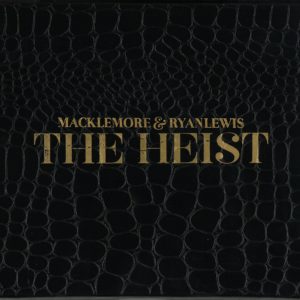 1. The Heist – Macklemore & Ryan Lewis (2012)
1. The Heist – Macklemore & Ryan Lewis (2012)
It’s not even kind of a debate: No Seattle album this decade was bigger than The Heist. Macklemore and Ryan Lewis’s magnum opus probably reached more people than every other album on this list combined – from local music scene kids to Ellen-watching moms – all while producing hits that permeated the pop culture zeitgeist, championing causes and local talent, and becoming ultra-divisive along the way.
Let’s get this out of the way to start: The Heist is a good album. While many people hate on it via the context of it being a bigger commercial success than other things they deemed more deserving, if it had never blown up on the national stage, there’s a pretty decent chance people would think of it as an underrated local gem. “Can’t Hold Us” is a completely unassailable pump-up anthem. It’s crazy that it became such a massive hit, but on its merits “Thrift Shop” is a delightful and catchy novelty song in a vein similar to “Stacey’s Mom” by Fountains of Wayne. On “Starting Over,” Macklemore delivers a painfully unvarnished account of slipping up in his sobriety. “Same Love” offers a heartfelt (if imperfect) message of love and acceptance for the LGBT community from a musical genre that historically isn’t woke to that cause. On “A Wake,” the MC essentially confronts a bunch of the white rapper criticisms that would be lobbed at him when he became super famous before he actually became super famous. Ever an afterthought, the production diversity Ryan Lewis created here should not be overlooked. And almost the entire album manages to be catchy because Macklemore and Ryan Lewis crafted a perfect formula of outsourcing the choruses to other singers more adept at writing hooks. (Tangential note: The reason that Seattle hip-hop scene didn’t blow up nationally post-The Heist, as some predicted it would, was mostly because the fatal flaw in the local scene’s MCs is the seeming inability to consistently write earworm choruses/hooks. Nobody after the fact came close to anything found on The Heist.)
There’s also the fact that Macklemore and Ryan Lewis essentially bet on themselves with this album (as covered in the anti-major label screed “Jimmy Iovine”) by self-releasing it (and then hiring Warner Music Group to do the radio promotion). As the album was blowing up on the charts, the duo were literally paying their friends to help pack and ship them out of their Seattle base. It’s a truly wild independent success story.
On the other hand, Macklemore and the album also drew more than a little heat. People were upset about the general idea of a white rapper having so much success and the appropriation issues that always raises. People were upset when The Heist won Best Rap Album at the Grammys over Kendrick Lamar’s Good Kid, m.A.A.d. City (and then got more riled up when Macklemore Instagramed a text he sent to Kendrick saying he “got robbed”). People were upset about “Same Love” having lyrics that could be read as Macklemore emphasizing how he’s not gay (as The Lonely Island delightfully mocked in Popstar).
And while Macklemore is not above reproach, these criticisms often seemed like potshots at an easy target when you break them down. Mainly because if you’ve seen him speak extemporaneously, you can pretty easily get the sense that he’s sort of like a golden retriever puppy: he’s hyper enthusiastic about everything and his actions are well-intentioned, but sometimes he steps in his own droppings or tears up the furniture. It’s never an act of malice, he’s just a puppy and doesn’t know any better. Was his Kendrick tweet corny? Yeah, but he probably actually meant it and it’s not like he was the one who voted to give himself the award. Are parts of the first verse of “Same Love” a little cringeworthily on close examination? Sure, but that’s easy to say as a woke art consumer in Seattle, but the song is much more for people in towns and states where being openly queer is still taboo.
But perhaps the most unheralded aspect of The Heist is just how much the album champions Seattle. First and foremost, the duo tapped into the local talent pool to make the record. The album’s signature hooks come courtesy Seattleites Wanz, Ray Dalton, Mary Lambert, and Hollis, with additional album cuts boasting choruses from the likes of Allen Stone, Buffalo Madonna, and Ben Bridwell of Band of Horses. Macklemore essentially became a beacon for Seattle positivity during the promotion and touring in support of The Heist, not only through lyrical shout-outs but also being seen in Seattle sports jerseys constantly. The album’s success also led to Macklemore and Ryan Lewis paying it forward by teaming up with MoPop and Arts Corps to create The Residency, which nurtures Seattle’s young hip-hop community with mentorship, lessons in production and business, and performance opportunities.
Love it or hate it, the cultural footprint Macklemore and Ryan Lewis left on Seattle during the 2010s via The Heist was one of sasquatchian size. It turns out, the ceiling actually couldn’t hold them.
